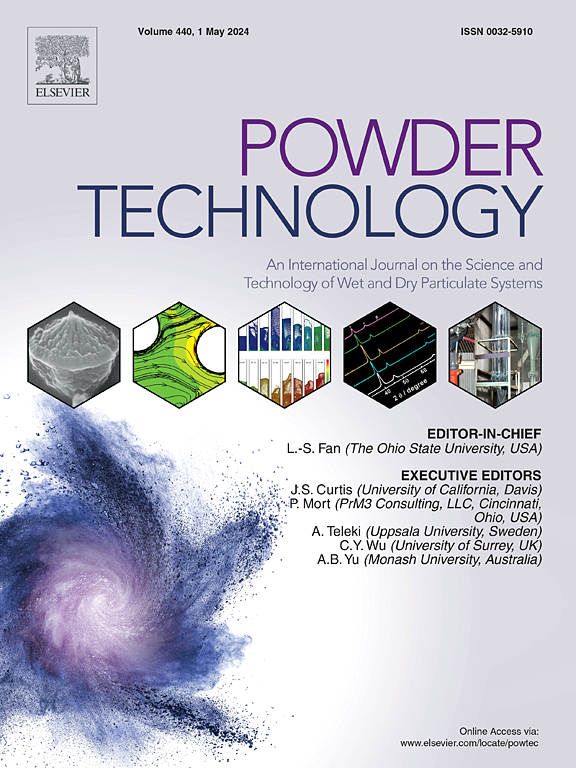Cold compressive strength of iron ore pellets in distinct reduction stages
IF 4.6
2区 工程技术
Q2 ENGINEERING, CHEMICAL
引用次数: 0
Abstract
The worldwide use of blast furnaces (BF) in ironmaking continues. The generation of fine matter in the BF shaft hampers the furnace operation and causes particle emissions. The tendency of the main charge of the BFs, iron ore pellets, to produce fines during the process is evaluated by means of standardized tests performed at a low constant temperature. In this work, the durability of commercial acid pellets was evaluated by performing cold compressive strength tests on samples that had been exposed to high-temperature experiments aiming for different reduction degrees in a laboratory-scale furnace simulating actual BF conditions. Strength was found to have decreased to a minimum of approximately 59 % of the original result when the reduction degree was 19 %. The studied pellet achieved a comparatively good result in the standardized low-temperature reduction-disintegration test, which shows the uncertainty of current methods in the evaluation of ferrous burden materials.

不同还原阶段铁矿球团的冷抗压强度
炼铁高炉(BF)在全球范围内的使用仍在继续。高炉炉膛中产生的细粒物质会妨碍高炉的运行并导致颗粒排放。通过在低温恒温条件下进行的标准化测试,对高炉的主要炉料(铁矿球团)在生产过程中产生细粒的趋势进行了评估。在这项工作中,通过对在实验室规模的熔炉中模拟实际 BF 条件进行不同还原度高温实验的样品进行冷抗压强度测试,对商用酸性球团的耐久性进行了评估。结果发现,当还原度为 19% 时,强度最低下降到原始结果的约 59%。所研究的球团在标准化低温还原-解体试验中取得了相对较好的结果,这表明了目前评估铁质包袱材料方法的不确定性。
本文章由计算机程序翻译,如有差异,请以英文原文为准。
求助全文
约1分钟内获得全文
求助全文
来源期刊

Powder Technology
工程技术-工程:化工
CiteScore
9.90
自引率
15.40%
发文量
1047
审稿时长
46 days
期刊介绍:
Powder Technology is an International Journal on the Science and Technology of Wet and Dry Particulate Systems. Powder Technology publishes papers on all aspects of the formation of particles and their characterisation and on the study of systems containing particulate solids. No limitation is imposed on the size of the particles, which may range from nanometre scale, as in pigments or aerosols, to that of mined or quarried materials. The following list of topics is not intended to be comprehensive, but rather to indicate typical subjects which fall within the scope of the journal's interests:
Formation and synthesis of particles by precipitation and other methods.
Modification of particles by agglomeration, coating, comminution and attrition.
Characterisation of the size, shape, surface area, pore structure and strength of particles and agglomerates (including the origins and effects of inter particle forces).
Packing, failure, flow and permeability of assemblies of particles.
Particle-particle interactions and suspension rheology.
Handling and processing operations such as slurry flow, fluidization, pneumatic conveying.
Interactions between particles and their environment, including delivery of particulate products to the body.
Applications of particle technology in production of pharmaceuticals, chemicals, foods, pigments, structural, and functional materials and in environmental and energy related matters.
For materials-oriented contributions we are looking for articles revealing the effect of particle/powder characteristics (size, morphology and composition, in that order) on material performance or functionality and, ideally, comparison to any industrial standard.
 求助内容:
求助内容: 应助结果提醒方式:
应助结果提醒方式:


